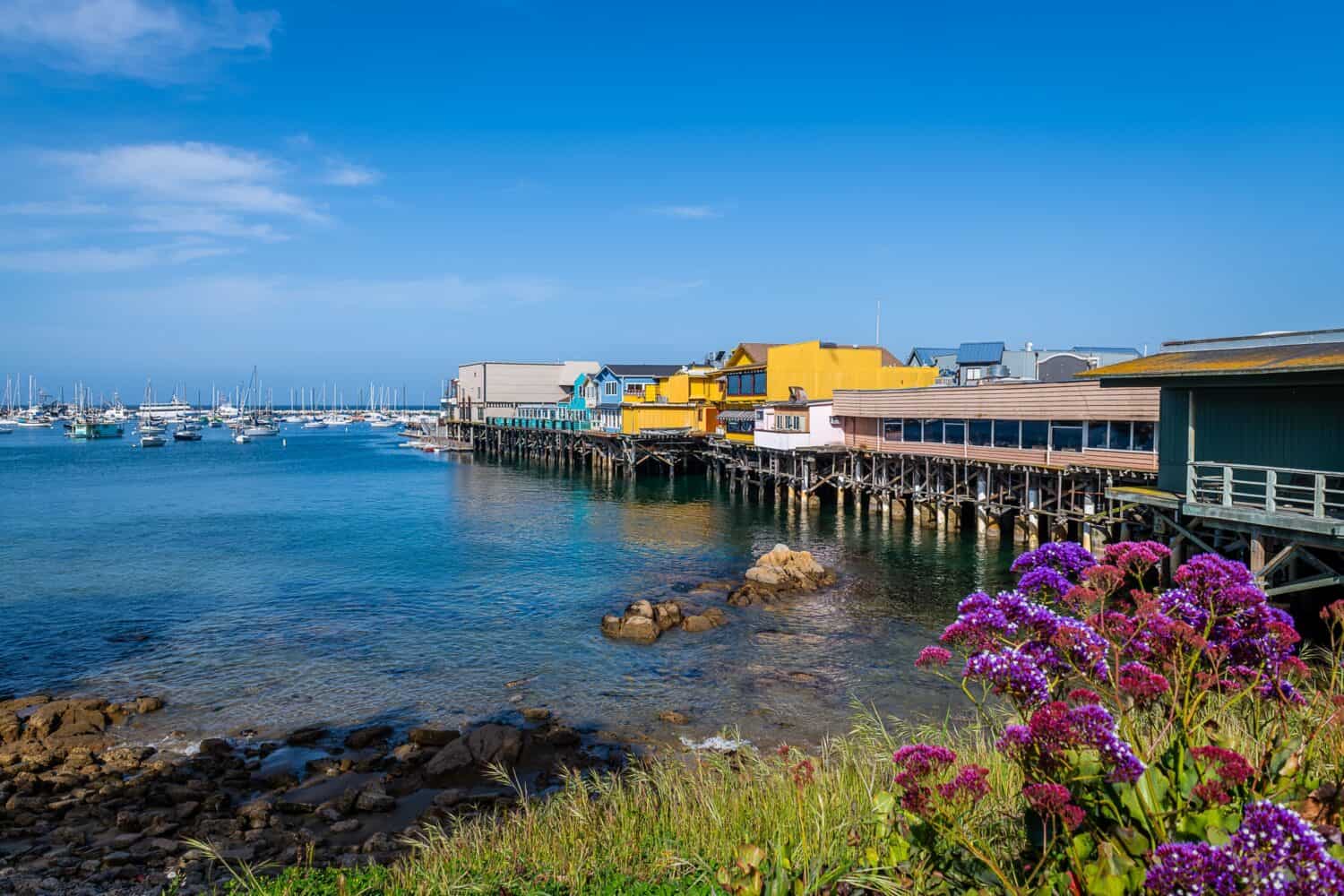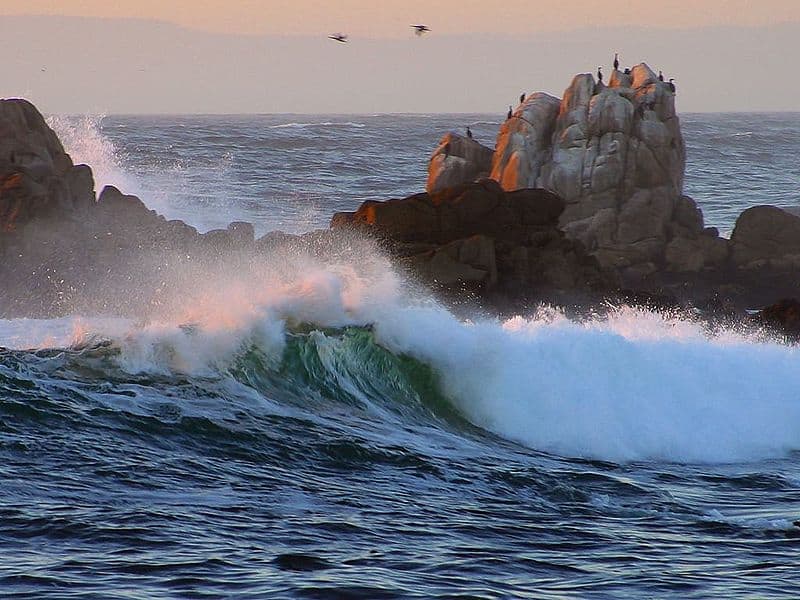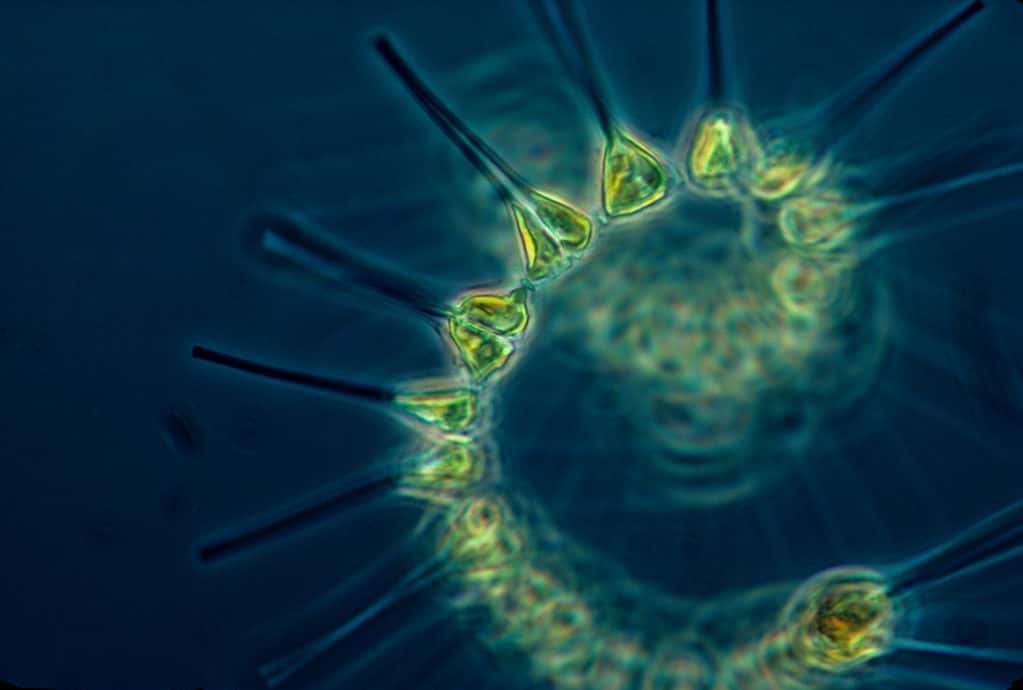Key Points:
- Monterey Bay in California is an incredible 12,743 feet deep at its deepest point — well over two miles and more than twice the depth of the Grand Canyon.
- The deepest point of Monterey Bay is over 34 times deeper than the deepest point of San Francisco Bay.
- The bay is home to a huge, diverse range of wildlife, including 36 species of marine mammals, more than 180 species of birds, and 525-plus species of fish.
California is a state worthy of exploration, a fact known by humans since they originally set foot on its expansive lands. The great state contains all six of the world’s major biomes: freshwater, forest, grassland, tundra, desert, and marine. This means you can explore several different kinds of environments in one state and witness all of the different wildlife that thrives there. South of San Francisco, a unique marine biome exists. Monterey Bay, also known as Monterey Canyon, is a fantastic example of the kind of biodiversity and wonder that exists along California’s varied shores.
Whether this is your first time hearing about this bay or you’d like to know more about a place you already love, you’ve come to the right place. Let’s dive into some exciting information about Monterey Bay, and especially explore its depths.
Where Is Monterey Bay?

Monterey Bay claims nearly a quarter of California’s entire coastline.
©Chris LaBasco/Shutterstock.com
Let’s travel down the coast of California, past Crescent City and its sea lion colony in the northernmost corner of the state all the way down past San Jose, home of Silicon Valley. As we exit the mountains north of the Bay Area, we watch the biome change once and then again, and we cruise down the crowded highways that navigate the populated streets of San Francisco, Fremont, and Oakland.
As we leave the greater Bay Area on our way south, we can follow the famous coastal highway — the 1 — through Half Moon Bay, Pescadero, and Davenport until the waters of Monterey Bay sparkle before us in Santa Cruz. We’ve made it. From the top of the bay facing south, we stare at a seemingly impossible distance of water, unable to see the city of Monterey on the other side. The bay stretches endlessly, claiming nearly a quarter of California’s entire coastline.
Where Is Monterey Bay Located on a Map?
Monterey Bay begins about 75 miles south of San Francisco and the shoreline of the sanctuary stretches for 276 miles. It straddles the border between the Central Coast and the Bay Area regions of California. Its northern half is in Santa Cruz County and its southern half is in Monterey County. It’s around 120 miles, or two hours’ drive, from Monterey to San Francisco.
How Deep is Monterey Bay?
At its deepest point, Monterey Bay is a stunning 12,743 feet deep! That’s well over two miles and more than twice the depth of the Grand Canyon! In comparison to the San Francisco Bay, it’s a goliath. The deepest point of Monterey Bay is over 34 times deeper than the deepest point of San Francisco Bay. The bay’s expansive shoreline and impressive depths make it a perfect home to several animal species, but before we get into that, let’s take a look at how the bay came to be.
Formation of Monterey Bay

The original formation of Monterey Bay is thought to be due to sea-level rise and wave action.
©Picture made by the guy running / public domain – Original / License
Monterey Bay is unique in its structure and we aren’t fully sure of its formational history. First of all, it is ever-shifting. Marine Geologists face many struggles in trying to map the bay and the canyon it contains because of strong currents called turbidity currents. Turbidity currents are like underwater avalanches. The rapid speed of the current causes sediment to be displaced and oceanic structures to be altered. This has not been assistive to researchers in their quest to learn more about the bay and canyon. In fact, these currents are so strong that they are capable of completely changing the underwater landscape several times a year.
The original formation of Monterey Bay is thought to be due to sea-level rise and wave action. No river is known to be responsible for cutting the underwater canyon so deep, instead, it is the force of the ocean and its turbidity currents that play the largest role in its existence. Turbidity currents aren’t constant — instead, they begin suddenly and continue for minutes to hours. Learning about the history of the canyon is further complicated by technology. Our current technology for exploring deep-sea areas cannot handle the kinds of currents that can carve canyons on the sea floor. Despite this, researchers conclude that the bay and canyon below formed at least 6.8 million years ago, and even up to 10 million years ago.
While we aren’t fully sure of its original formation, the bay and canyon remain integral and enchanting to its residents — human and otherwise. It is a site of vast knowledge and interest, and we will continue mapping its depths and observing its changes for years to come.
Wildlife in Monterey Bay

There are 36 separate species of marine mammals, including the
minke whale
that make the bay their home.
©Annie Leblanc/Shutterstock.com
The constantly-changing formation of the bay and canyon does not deter life from thriving in it. In fact, the entire bay is a melting pot of fauna and flora. Extensive kelp forests make excellent homes for many fish and other critters, and the rocky shores of Monterey Bay provide ample nesting places for several migratory and native birds. From calm estuary to waves smashing against rocky cliffs, there is plenty of room for life.
36 separate species of marine mammals make the bay their home, along with more than 180 species of birds. More than that, 525-plus species of fish swim in its depths. We’ve included short lists of animals that live in the area, but rest assured that life there is far more extensive than what we can provide in this article.
Marine Mammals
- Bottlenose Dolphin
- California Sea Lion
- Dwarf Sperm Whale
- Killer Whale
- Minke Whale
- Sei Whale
- Southern Sea Otter
- Striped Dolphin
- Stellar Sea Lion
Birds
- Snowy Plover
- Black-footed Albatross
- Western Gull
- Pigeon Guillemot
- Ashy Storm-Petrel
- Wandering Tattler
- Ruddy Turnstone
- Brown Booby
- Horned Puffin
Fish
- California Halibut
- Chinook Salmon
- White Seabass
- Kelp Bass
- Leopard Shark
- Cabezon
- Lingcod
- Tuna
- White Shark
- Halibut
The lists we have provided do no justice to the life that exists below the surface of the water. It is hard for even marine biologists to categorize all of the species of animals and plants that exist in the area. Some marine groups contain thousands of species worldwide, and concentrations of hundreds or even thousands of species from one order are present and thriving in the bay. Mollusks are just one of these. Our knowledge of the waters is vast, but the waters and the life in them are even more so.
More About the Monterey National Marine Sanctuary
Monterey Bay carries deep significance for marine animals, and many of the waters are protected as sanctuary waters. The area was designated as a sanctuary in 1992 and has been taken care of in more and better ways ever since. When it became a sanctuary, it achieved federal protection, which served to honor and protect its waters and all of the creatures that live in and around it. Because of its size and diversity of marine mammal life, it is known as the “Serengeti of the Sea.”
The protection of the area prevents oil drilling and other harmful activities, but recreation is still allowed and encouraged in the area. People come from far and wide to swim, boat, kayak, fish, and view wildlife. The aquarium along the shores in Monterey brings in more than 2 million visitors a year. That’s just the aquarium — can you imagine how many people spend time in awe of this great body of water?
Other activities in the area include whale watching and tide pooling, but be careful not to disturb marine life too much. The protection of this area still greatly depends on you and your actions when you visit.
Fun Facts

Phytoplankton turns the waters of Monterey Bay blue.
©Porco_Rosso/Shutterstock.com
We’ve compiled a small list of fun facts about Monterey Bay and the Sanctuary it houses to finish out our exploration.
- The Monterey Bay National Marine Sanctuary covers 5,312 square miles, one and a half times the size of the largest national park in the continental U.S.
- The city of Monterey rests along the shores of Monterey Bay and is more than 400 years old.
- Carmel-By-The-Sea is another town along the bay, and you need a permit to wear high heels there.
- Monterey Bay is surrounded by the number 1 agricultural region in the United States: Salinas Valley.
- Monterey Bay gets its famous blue color from microscopic plankton called coccolithophores. These plant plankton’s ancestors date back to the Triassic Period (more than 200 million years ago). This phytoplankton is also a major food source for many of the whales that swim in the waters.
- There are 460-plus documented shipwrecks in Monterey Bay.
The photo featured at the top of this post is © Robert Campbell / CC BY-SA 3.0 – License / Original
Thank you for reading! Have some feedback for us? Contact the AZ Animals editorial team.







